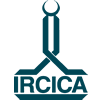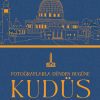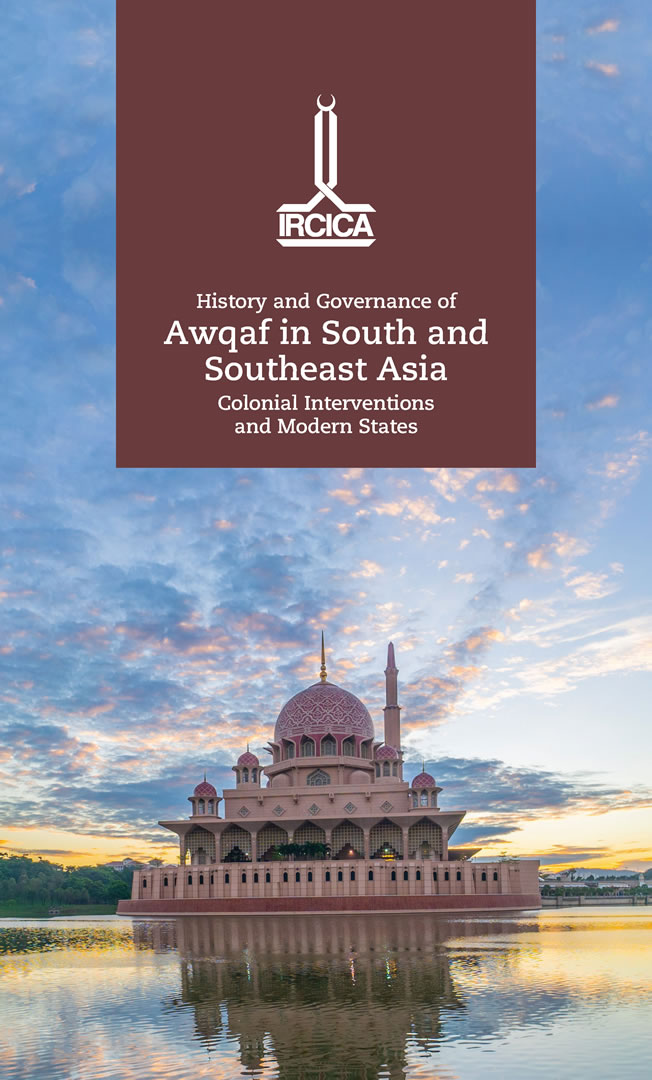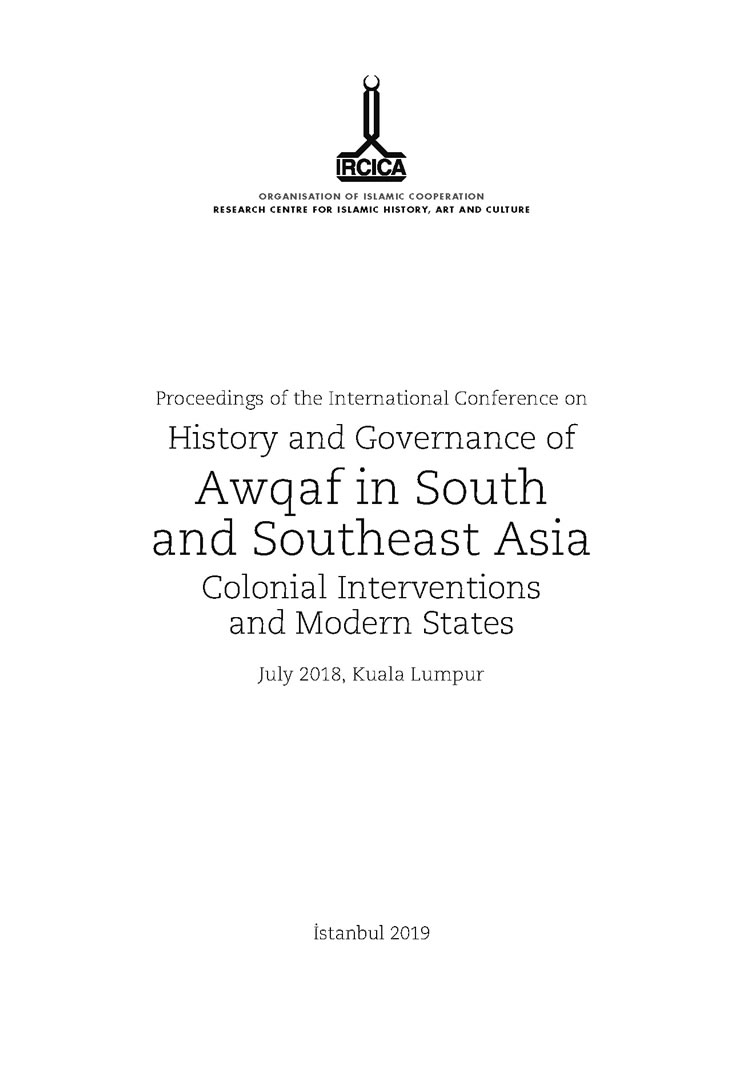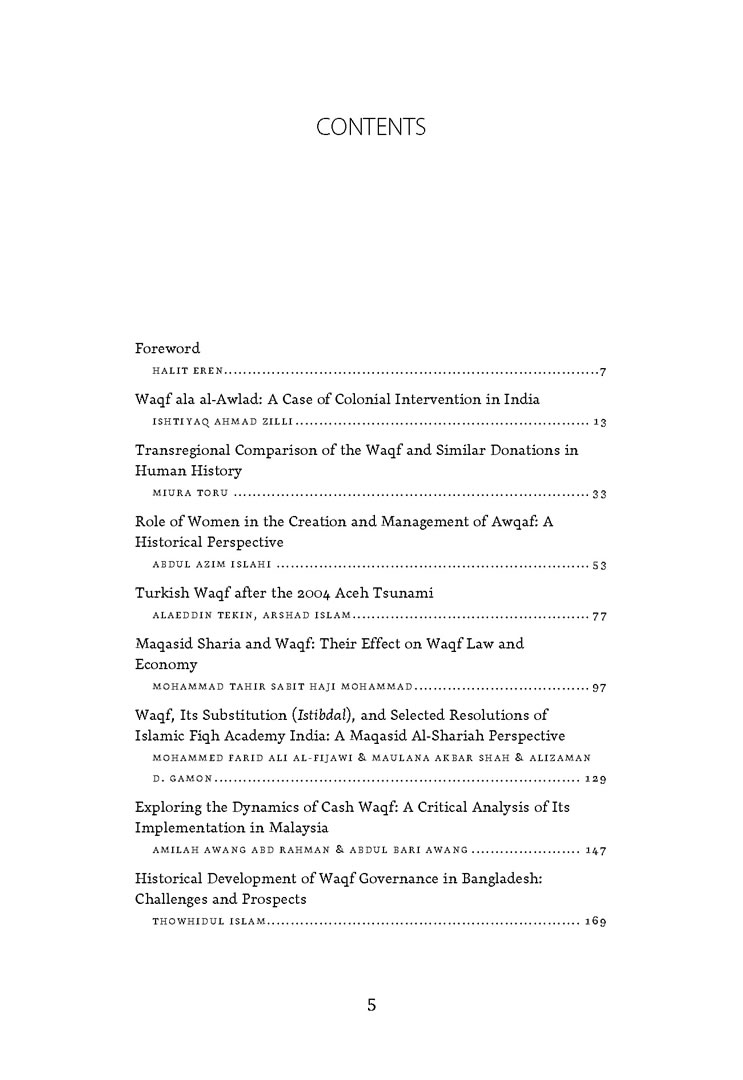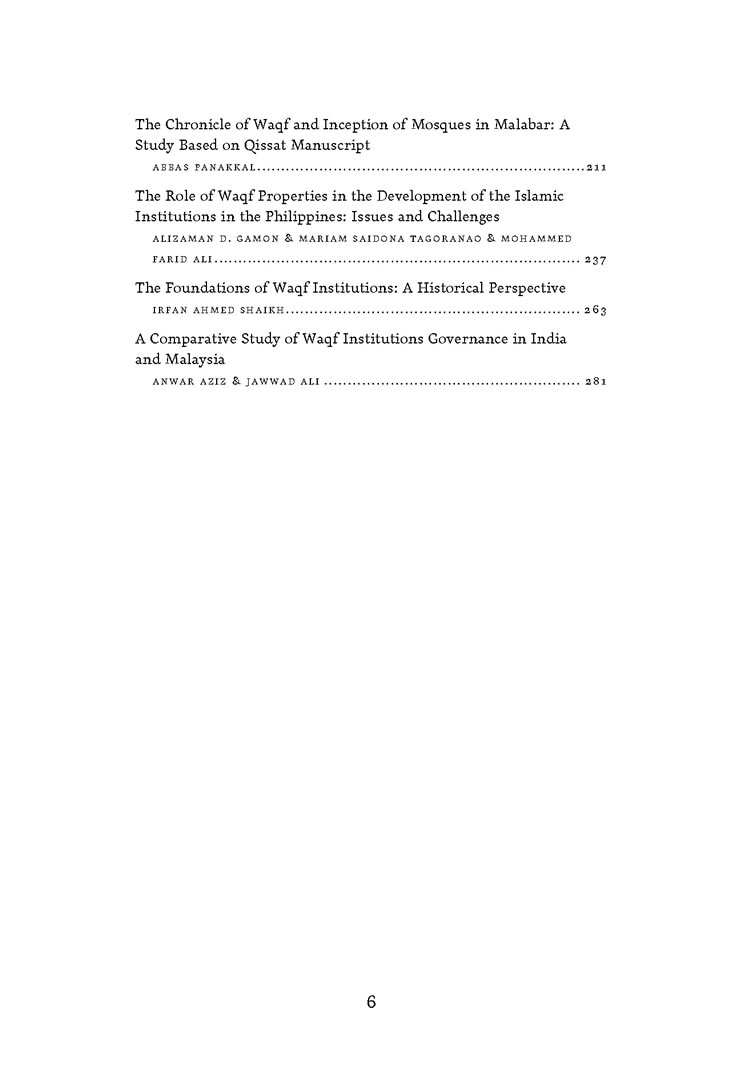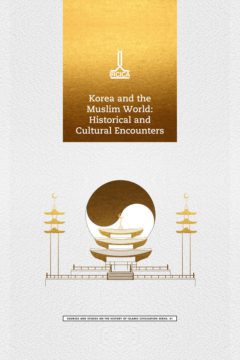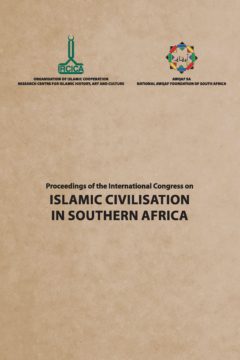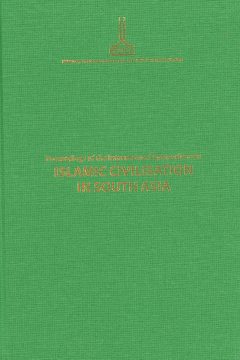The waqf institution has always been a crucial element of the administrative and institutional traditions of Muslim societies across the world. Therefore, scholarly studies exploring various aspects of the development and governance of awqaf have been important for academic research on Islamic history and civilization. This book of proceedings includes twelve valuable academic papers presented at the International Conference on ‘History and Governance of Awqaf in South and Southeast Asia: Colonial Interventions and Modern States’. The conference was jointly organized by ircica and the International Islamic University in Malaysia (iium) on 4-5 July 2018 in Kuala Lumpur, Malaysia. The conference presented a valuable platform for scholars specializing in studies on the history and governance of awqaf to share their academic insights on various aspects of the waqf institution in the Muslim world. As such, the book of proceedings reflects the main proposals, findings and contributions of leading experts in the field with a view to share them with the global academic audience.
The articles included in this original volume address various aspects of awqaf in South and Southeast Asia. The main areas of focus comprise awqaf in Islamic law and philosophy; historical development of awqaf and their modes of governance; legal issues of waqf management; role of awqaf in higher education; relations between awqaf and non-profit sectors; comparative studies on awqaf in different cultures; implications of colonialism on waqf institutions; modern states and their attitudes towards awqaf; and future strategies to improve current regimes of managing awqaf.
The first two articles of the volume are written by the distinguished keynote speakers of the conference namely Prof. Ishtiyaq Ahmad Zilli, Director of Darul Musannefin Shibli Academy, Azamgarh, India and Prof. Toru Miura, Vice-President and Professor at Ochanomizu University and Toyo Bunko Library in Tokyo-Japan. Prof. Zilli, in his article entitled ‘Waqf ala al-Awlad: A Case of Colonial Intervention in India’, offers a comprehensive account of interventions into waqf properties by the British colonial administration and the ways in which the Muslim community in India tried to respond to these unjust interventions. He states that during the long Muslim rule in India a large number of charitable endowments were created by charitable individuals and the governments. But he also underlines that after the downfall of the Mughals and establishment of British hegemony in the Subcontinent, waqf properties were embezzled with colonial rulers and their local allies. He aptly demonstrates how Muslim waqf properties were confiscated especially after the failure of the War of Independence in 1857 with concrete and somewhat dramatic examples.
The second article by Prof. Toru Miura, another keynote speaker of the conference, is entitled ‘Trans-regional Comparisons of the Waqf and Similar Donations in Human History’ in which he compares and contrasts the development of waqf institution in different cultures. Prof. Miura starts by offering a general definition of the waqf institution and mentions comparative studies conducted by Toyo Bunko Library on the development of waqf institutions in different cultures. Then he moves onto a detailed trans-regional comparison on waqfs and similar donations in pre-modern China and Japan. He also forms parallels between different forms of waqf donations in the Islamic world and the Kishin donations in Japan. Prof. Miura expresses his goal as finding out a common viewpoint and universal system that could solve the dilemma between economy and religion, private and societal interests.
The third article is written by Prof. Abdulazim Islahi from King Abdulaziz University in Saudi Arabia and is entitled ‘The Role of Women in the Creation and Management of Awqaf: A Historical Perspective’. Prof. Islahi cogently shows that Muslim women did not stay behind in acts of piety including the creation of waqfs over history. He demonstrates that the Prophets.a.w. encouraged women to doing good deeds and spending on the poor and relatives. Prof. Islahi studies the overall role played by women in waqf creation, continuity and changes throughout Islamic history. He argues that the waqf institution played a crucial role in the empowerment of women and their participation in social life. He presents specific examples ranging from the time of the Prophets.a.w. to Umayyad, Abbasid, Ayyubid and Ottoman periods in which women played an active role in the formation, administration and expansion of awqaf in different areas.
The fourth article focuses on the role of ‘Turkish Waqfs after the Tsunami in Aceh in 2004’ and is written by Dr. Arshad Islam and Alaeddin Tekin from the IIUM. The authors start their analysis by looking at the development of waqf institution in Turkish culture and history. They then present an overview of relations between the Turks and the Acehnese throughout history, and move on to a description of the activities of Turkish awqaf in the Aceh region in the fields of housing, education and social support. Based on interviews in the area and preliminary information from the relevant waqf institutions, this study is a good example how the works of awqaf brought the Turkish and Acehnese communities closer in the aftermath of the Tsunami disaster in 2004.
The fifth article is written by Dr. Mohammad Tahir Sabit Haji Muhammad from the iium and is entitled ‘Maqasid Sharia and Waqf: Their Effects on Waqf Law and Economy’. Dr. Mohammad first outlines the concept of maqasid al-Sharia expresses the connection between the charitable of objectives of the waqf and these maqasid. He elaborates on the notions of protection of religion, human self, human mind, human race, individual property and shows how these relate to the purposes of waqfs such as submission to Allah(SWT), trusteeship, development of communities, sustainability, solidarity, redistribution of wealth and altruism. Dr Mohammad offers a widened conception on the notion of waqf so that it could encompass all maqasid al-Sharia as well as priorities such as maximization of benefit and ease of distress.
The sixth article entitled ‘Waqf, its Substitution and Selected Resolutions of Islamic Fiqh Academy India: A Maqasid Al-Sharia Perspective’ is written by Dr. Ali Al-Fijawi, M.A. Shah and A.D. Gamon from the iium. Like the previous article by Dr. Mohammad, the authors present a general definition of the concept of waqf and demonstrate the link between maqasid al-Sharia and waqf objectives. They also utilize a pre-seminar questionnaire produced by the Islamic Fiqh Academy India (ifa) in 1997 in order to gauge the opinions of Indian scholars on the waqf institution and state of waqf properties in India. The study aims to find out whether istibdal as a human-initiated measure meets the maqasid al-Sharia by looking at concrete examples.
The seventh article is written by Dr. Amilah Awang Abdurrahman, and Dr. Abdulbari Awang from the iium, and is entitled ‘Exploring the Dynamics of Cash Waqf: A Critical Analysis of Implementation in Malaysia’. The authors look at the historical development of the waqf institution since the time of the Prophet(SAW) with special reference the issues of cash waqf and perpetuity. They present a categorization on the implementation of cash waqfs suggested by the Islamic jurists which include mudarabah, al-Ibda and interest-free loans. The study also looks at the implementation of cash waqfs in different states of Malaysia, offering comparative insights.
The next article in the volume represents an interesting case-study on Bangladesh by Dr. Thowhidul Islam from the Islamic University of Chittacong. In ‘Historical Development of Waqf Governance in Bangladesh: Challenges and Prospects’, Dr. Islam presents an analysis on different stages of historical development of waqf governance in the country. He suggests that awqaf have been an important part of communal life in Bengal since the advent of Islam in the 13th century and played a crucial role in the economic, social and cultural development. The study underlines that various large-scale educational institutions flourished in Bengal thanks to waqf endowments supported by wealthy Muslims. But it also stresses that the legal and institutional development of waqf governance occurred in later periods. Dr. Islam presents an overview of waqf laws and social reactions in Bengal starting from the colonial era under British rule and reaching to the period of Bangladeshi independence. He finally outlines the main challenges for waqf governance in the country and offers concrete policy proposals to improve the current state of affairs.
The ninth article entitled ‘The Chronicle of Waqf and Inception of Mosques in Malabar: A Study Based on Qissat Manuscript’ is written by Dr. Abbas Panakkal from Griffith University in Australia. This study focuses on the Qissat Manuscript as an original historical source displaying the initial development of Islam and awqaf in the South and South East Asia. Dr. Panakkal aptly demonstrates narratives from the Qissat explaining conversion of Kings and rulers to Islam in the coastal Malabar region since the time of the Prophet(SAW). He then goes on to explaining the construction of first mosques in the region by the Muslim communities and the acquisition of first waqf properties. This study based on primary historical sources is crucial in terms of emphasizing the early roots of Islamization in South Asia, as well as determining the exact root of institutional development through mosques and awqaf.
The tenth article is another case-study focusing on the role of waqf properties in Philippines written by Dr. A.D. Gamon, M.S. Tagorano and M.F. Ali from the iium. In ‘The Role of Waqf Properties in the Development of Islamic Institutions in the Philippines: Issues and Challenges’, the authors suggest that awqaf have become instruments for upgrading the legal, social and economic status of Islamic institutions in the country. They demonstrate how various services supported by the waqf institutions facilitated the life of Muslim minority living under a secular, Christian state. Presenting details about the Bangsamoro, the Muslim minorities in the Philippines, the authors underline the contributions of awqaf to the development and preservation of a Muslim identity on the face of assimilation policies imposed by official authorities. They indicate various educational and religious institutions supported by awqaf and present future prospects for improvement of the legal and financial regime surrounding the waqf system.
The eleventh article entitled ‘The Foundations of Waqf Institutions: A Historical Perspective’ is written by Irfan Ahmed Sheikh. The author examines the main motives that helped the development of waqf as a distinctive method for the provision of public services in the Muslim world. The central question that the study attempts to answer concerns why Islamic states allowed the development of waqf institutions over history despite the fact that they significantly lowered their concrete tax base. Following a conceptual and historical introduction, the author explains that the ideals of social justice and harmony supported the expansion of awqaf despite taxation issues, while their governance changes along with modernization movements in various geographies.
Last but certainly not least, the twelfth article entitled ‘A Comparative Study of Waqf Institutions Governance in India and Malaysia’ is written by Anwar Aziz and Jawwad Ali from the iium. The authors present a comprehensive comparative account of waqf institutions in India and Malaysia throughout history with an aim to highlight the main issues pertaining to the governance and management of waqf institutions. To this aim, they highlight waqf laws and administrative models, the role of mutawallis, main legal constraints, accountability and disclosure issues, as well as the relative impact of colonization on awqaf. They conclude that there are specific areas in which both countries could transfer best-practices from each other’s’ waqf management regimes.
This comprehensive volume is expected to become a major reference work for scholars and researchers focusing on various aspects of awqaf in general, and studies on specific aspects of South and Southeast Asia in particular.
